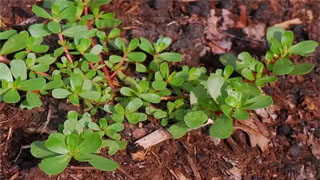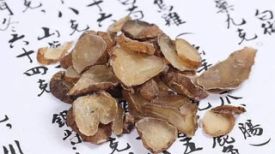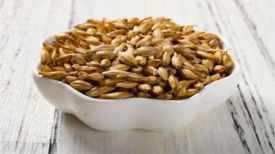
1. Aliases
Melon seed vegetable, sour vegetable, horse tongue vegetable, horse tooth grass, horse tooth vegetable, five element grass, five square grass.2. Plant morphology
Annual herbaceous plant, smooth and hairless, plump, succulent and juicy. The stem is cylindrical, with the lower part lying flat and the upper part slanting or upright. It is multi branched and often appears purple. Leaves alternate or opposite, with extremely short petioles and scaly appendages at nodes. Leaves are thick, wedge-shaped, rectangular, or obovate, entire, rounded or truncate at the top, sometimes slightly concave, dark green above and dark red below, with inconspicuous lateral veins. Flowers often cluster 3-5 at the end of the branch, with 4-5 bracts and membranous; Sepals 2, small, fused with the ovary at the base; 5 petals, yellow, often inverted heart-shaped, fused at the base; 1 pistil, ovary semi inferior, ovate, 1-loculed, style shorter than filaments, stigma 4-6 deeply lobed, linear. Capsule short conical, brown, lid cracked; The seeds are mostly black, small, and densely covered with fine dots on the surface. The flowering period is from June to September, and the fruiting period is from July to October.
3. Habitat distribution
Commonly found in fields, vegetable fields, open spaces near residential areas, and roadsides, it is drought resistant and has strong vitality. Distributed in most parts of the country.
4. Harvesting and processing
Harvest when the stems and leaves are lush in summer and autumn. Cut the whole grass, wash it, heat it slightly with boiling water, and then dry it in the sun.
5. Characteristics of medicinal herbs
Purslane is often wrinkled and curled, often forming clusters. The stem is cylindrical, with a yellow brown surface and obvious longitudinal grooves. Leaves opposite or alternate, easily broken, intact leaves obovate; Yellow brown, apex blunt or slightly lacking, entire. The flower is small, with 3-5 flowers growing at the end of the branch and 5 petals, yellow. The capsule is conical in shape and contains many small seeds. Slightly qi, slightly sour taste.
6. Nature, taste, and meridian tropism
Sour taste and cold nature. Return to the Large Intestine Meridian and Liver Meridian.
7. Effect and function
Clear heat and detoxify, cool blood and stop bleeding. It belongs to the category of heat clearing and detoxifying drugs.
8. Clinical applications
Dosage 9-15 grams, decoct and take; Fresh product dosage: 30-60 grams. Apply an appropriate amount of external pressure to the affected area. Used to treat enteritis, dysentery, boils and swelling, snake and insect bites, hemorrhoid swelling and pain, eczema, erysipelas, snake and insect bites, rectal bleeding, hemorrhoid blood, acute dermatitis caused by metrorrhagia, subacute dermatitis, herpes zoster, postpartum and functional genital bleeding, appendicitis, and hookworm disease.
9. Pharmacological research
Purslane has the effect and function of contracting the uterus; Affects cardiovascular and respiratory systems; It has a biphasic effect on skeletal muscles, increasing the tension, amplitude, and frequency of small intestine contraction. However, there are also reports that this decoction has an inhibitory effect on the isolated small intestine of guinea pigs; Antibacterial effect; It has a cholesterol lowering effect. It can promote the normalization of epithelial cell function and the healing of ulcers. It has a diuretic effect. Alcohol extracts or water decoctions have significant inhibitory effects on various dysentery bacilli; It also has inhibitory effects on pathogenic skin fungi such as Escherichia coli, Salmonella typhi, Staphylococcus aureus, and Bacillus subtilis, and can develop resistance to Shigella; It can also promote ulcer healing, constrict blood vessels, and regulate blood lipids.
10. Chemical composition
Portulaca oleracea mainly contains vitamins, organic acids, amino acids, sugars, fatty acids, flavonoids, trace elements, mucin, alanine, betaine, betaine glycoside, isobetarin, isobetarin, norepinephrine and other components.
11. Taboos for use
Prohibited for those with spleen deficiency and loose stools, as well as pregnant women.
12. Compatibility prescription
① To treat pertussis: 30g purslane and 10g baibu. Boil in water and take with white sugar. (Sichuan Journal of Traditional Chinese Medicine, 1979)
② Treatment for pulmonary tuberculosis: 45 grams of fresh purslane, 15 grams of ghost needle grass, and 15 grams of gourd tea each. Boiled in water. (Fujian Pharmacopoeia)
③ Treatment of anal swelling and pain: Portulaca oleracea leaves, clover, etc. Fried soup, smoked and washed, effective twice a day. ("Bianhu Ji Jian Fang")
④ Treat urinary and rectal bleeding: fresh purslane juice, lotus root juice in equal amounts. Half a cup (about 60 grams) each time, served with rice soup. (Food, Traditional Chinese Medicine, and Stool Formula)
⑤ Treating hemorrhoids and leakage: Mix purslane with Sichuan pepper and fry together. Wash three or five times to take effect. (The Prescription for Planting Apricot Immortals)
⑥ To treat cold, dampness, and pain: Mash purslane into velvet, apply heat to the affected area, then mash the juice and cook wine to take effect. (He Shi Ji Sheng Lun)
⑦ Treatment of jaundice: fresh purslane juice. Take about 30 grams each time, rinse with hot water, twice a day. (Food, Traditional Chinese Medicine, and Stool Formula)
The content of the article is for clinical reference only. Non professionals in traditional Chinese medicine are not allowed to try medication.


